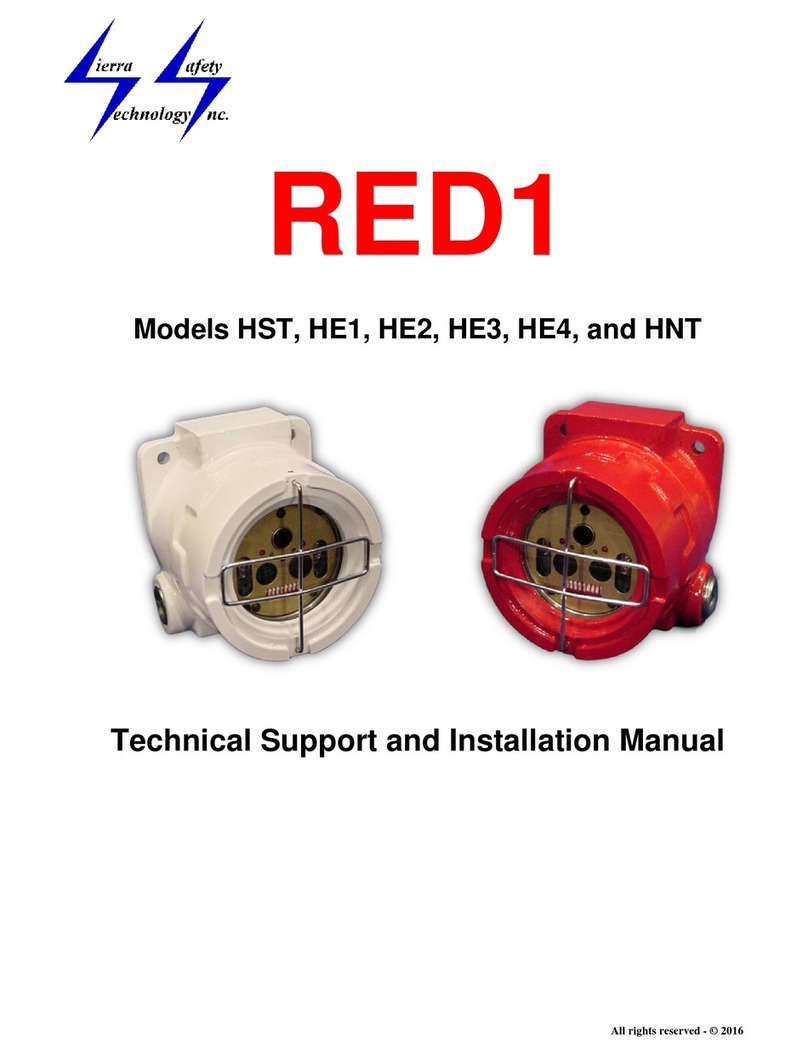
Installation Manual
Page: 4DCR1-C Flame Detector Models (11/2019)
2.6.1 Power Up Mode (Detector Reset)
When power is applied or recycled to a DCR1
detector, it enters Power Up Mode. Upon entering
Power Up Mode, all internal flags and triggers are re-
initialized and self-tests are initiated to ensure the
proper operation of the detector’s systems. In
addition, both red LEDs will begin flashing 2
sequential patterns, thereby providing a quick visual
representation of the model type and latching
configuration.
The first flash pattern indicates the model type. LED 1 will illuminate while LED 2 flashes
one time to identify that it is a DCR1-CS1 device. For -CT1 detectors, LED 2 will flash
two times rather than one time. Once complete, both LEDs will turn off.
The second flash pattern indicates whether a device is configured for latching or non-
latching Fire Relay operation. Again, LED 1 will illuminate, followed by LED 2 flashing
once to indicate the device is set to latching and twice to indicate non-latching. Once
complete, both LEDs will turn off.
When Power Up Mode has successfully completed, the DCR1 should go into Normal
Mode to indicate that the detector is ready to detect a fire.
2.6.2 Normal Mode
In Normal Mode, both LEDs will simultaneously flash briefly every 8 seconds. When a
detector is in Normal Mode it is constantly monitoring the environment and ready to
detect a fire. If a detector goes into a different mode, the appropriate output is triggered
and the “flash every 8 seconds” LED indication is suspended until the detector returns to
Normal Mode.
2.6.3 Fire Mode
When a DCR1 declares a fire, the Fire Relay energizes and both red LEDs on the face
of the detector (see Figure 2-2) come on and stay lit.
If the device was programmed (factory default) for latching operation, and a fire is
declared, the detector will remain in Fire Mode until the detector is reset by cycling
power.
For non-latching detectors, once the fire falls below the acceptable threshold, the
detector will return to Normal Mode after a period without reinitiating Power Up Mode
(factory default is 5 seconds.) It is important to note that once a non-latching device
returns to Normal Mode, the FireScape™ data stored in the detector’s memory will be
overwritten upon any subsequent fire event.
2.6.4 Fault Mode
When powered on, the DCR1 continuously monitors several of its internal systems to
ensure proper functionality is maintained. When a fault is detected, the device enters
Fault Mode and de-energizes the Fault Relay. The two LEDs on the face of the detector
(see Figure 2-2) provide a visual indication to help identify the type of fault being
reported (see TROUBLESHOOTING.) Only the highest numbered fault is indicated by
Figure 2-2 LEDs




























